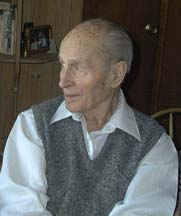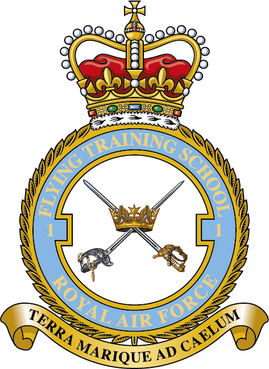
The Gloster Meteor was the first British jet fighter and the Allies' only jet aircraft to engage in combat operations during the Second World War. The Meteor's development was heavily reliant on its ground-breaking turbojet engines, pioneered by Frank Whittle and his company, Power Jets Ltd. Development of the aircraft began in 1940, although work on the engines had been under way since 1936.

The Red Arrows, officially known as the Royal Air Force Aerobatic Team, is the aerobatics display team of the Royal Air Force (RAF) based at RAF Waddington. The team was formed in late 1964 as an all-RAF team, replacing a number of unofficial teams that had been sponsored by RAF commands.

London Biggin Hill Airport is a minor commercial airport serving Biggin Hill in the London Borough of Bromley, located 12 NM south-southeast of Central London. It specialises in general aviation, handling a spectrum of traffic from private aviation to large business jets. It currently has no scheduled airline service, as flights using the airport are not regularly permitted to carry fare-paying passengers.

Janusz Żurakowski was a Polish fighter and test pilot. At various times in his life he lived and worked in Poland, the United Kingdom, and Canada.

Royal Air Force Barkston Heath or RAF Barkston Heath is a Royal Air Force Relief Landing Ground under the command of RAF Cranwell near Grantham, Lincolnshire, England.
An Air Experience Flight (AEF) is a training unit of the Royal Air Force Volunteer Reserve whose main purpose is to give introductory flying experience to cadets from the Air Training Corps and the Combined Cadet Force. As of 2019, thirteen AEFs are active.

Number 43 Squadron, nicknamed the Fighting Cocks, was a Royal Air Force aircraft squadron originally formed in April 1916 as part of the Royal Flying Corps. It saw distinguished service during two world wars, producing numerous "aces". The squadron last operated the Panavia Tornado F3 from RAF Leuchars, Scotland, in the air defence role, until it was disbanded in July 2009.

Number 16 Squadron Royal Air Force, nicknamed 'the Saints', is a flying squadron of the Royal Air Force (RAF) who currently provide elementary flying training (EFT) with the Grob Tutor T1, presently based at RAF Wittering, an RAF airbase in Cambridgeshire, England.

The Grob G 115 is a general aviation fixed-wing aircraft, primarily used for flight training. It is built in Germany by Grob Aircraft. The E variant with a 3-blade variable pitch propeller is in service with the Finnish Air Force, the Royal Navy and Army Air Corps for Flying Grading and in the Royal Air Force as part of No. 6 Flying Training School which provides flying to both University Air Squadrons and Air Experience Flights to Cadets of the Royal Air Force Air Cadets. As of 2020, the Tutor is still being used by the RAF for some Elementary Flying Training (3FTS) but is due to be phased out in favour of its replacement, the more advanced Prefect T1.

The Hawker Hunter Tower Bridge incident occurred on 5 April 1968, when Royal Air Force (RAF) Hawker Hunter pilot Alan Pollock performed unauthorised low flying over several London landmarks and then flew through the span of Tower Bridge on the River Thames. His actions were to mark the 50th anniversary of the founding of the RAF and as a demonstration against the Ministry of Defence for not recognising it.

The Central Flying School (CFS) is the Royal Air Force's primary institution for the training of military flying instructors. Established in 1912 at the Upavon Aerodrome, it is the longest existing flying training school. The school was based at RAF Little Rissington from 1946 to 1976. Its motto is Imprimis Praecepta, Latin for "The Teaching is Everlasting".

North Weald Airfield is an operational general aviation aerodrome, in the civil parish of North Weald Bassett in Epping Forest, Essex, England. It was an important fighter station during the Battle of Britain, when it was known as the RAF Station RAF North Weald. It is the home of North Weald Airfield Museum. It is home to many private aircraft and historic types, Essex & Herts Air Ambulance helicopter and is an active flight training airfield.

The No. 1 Flying Training School is the oldest military pilot training school in the world, currently used to deliver rotary training to aircrew of the British armed forces.

Air Marshal Clifford Rodney Spink, is a retired senior Royal Air Force officer, who is now a Spitfire display pilot on the national air display circuit. The first Spitfire he ever flew belonged to the Battle of Britain Memorial Flight, during his tenure as Station Commander of RAF Coningsby. He also served as the 23rd Commandant of the Royal Observer Corps, the last but one officer to hold the post.
No. 6 Flying Training School RAF is a Flying Training School (FTS) within No. 22 (Training) Group of the Royal Air Force that delivers flying training to University Air Squadrons and Air Experience Flights.
Squadron Leader Edward Alan Tennant DFC was a Royal Air Force (RAF) fighter pilot who later became chief test pilot of Folland Aircraft.
John Frederick Farley, was a British fighter pilot and test pilot for the Royal Air Force who was made an Officer of the Order of the British Empire for his work in aviation. As a test pilot, he was heavily involved in the development of the Hawker Siddeley P.1127 and latterly the BAE Harrier. During his aviation career Farley flew over 80 different types of aircraft and was the first British pilot to fly the Mikoyan MiG-29.
This is the structure of the Royal Air Force, as of October 2020.














